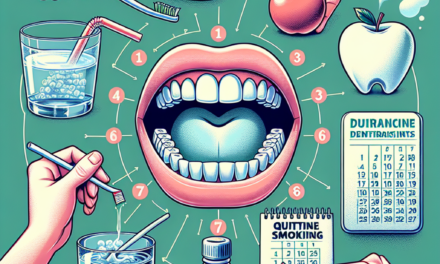Addressing the Silent Struggle of Patient Burnout in Chronic Illness

Chronic illness affects millions of people worldwide, often leading to a silent struggle that is not always visible to the outside world. One of the most significant challenges faced by individuals with chronic conditions is patient burnout. This phenomenon, characterized by emotional, physical, and mental exhaustion, can severely impact the quality of life and the ability to manage one’s health effectively. This article delves into the intricacies of patient burnout in chronic illness, exploring its causes, effects, and potential solutions.
Understanding Patient Burnout in Chronic Illness
Patient burnout is a complex and multifaceted issue that arises from the prolonged stress and demands of managing a chronic illness. Unlike acute conditions, chronic illnesses require ongoing attention, often for a lifetime. This constant vigilance can lead to a state of burnout, where patients feel overwhelmed and unable to cope with their health responsibilities.
Burnout in chronic illness is not just about feeling tired; it encompasses a range of emotional and psychological symptoms. Patients may experience feelings of hopelessness, frustration, and a sense of being trapped in their condition. This emotional toll can lead to a decrease in motivation to adhere to treatment plans, further exacerbating health issues.
Several factors contribute to patient burnout, including the unpredictability of symptoms, the complexity of treatment regimens, and the social isolation that often accompanies chronic illness. Understanding these factors is crucial in addressing the silent struggle faced by many patients.
The Emotional Toll of Chronic Illness
Living with a chronic illness is an emotional rollercoaster. Patients often experience a range of emotions, from anger and frustration to sadness and despair. These emotions can be triggered by the limitations imposed by their condition, the loss of independence, and the constant need for medical attention.
For example, a patient with rheumatoid arthritis may feel frustrated by their inability to perform daily tasks without pain. This frustration can lead to feelings of inadequacy and a sense of being a burden to others. Over time, these emotions can accumulate, leading to burnout.
Moreover, the emotional toll of chronic illness is compounded by the stigma and misunderstanding that often surround these conditions. Patients may feel isolated and unsupported, further contributing to their emotional distress.
The Physical Demands of Managing Chronic Illness
The physical demands of managing a chronic illness can be overwhelming. Patients must navigate a complex web of medical appointments, treatments, and lifestyle changes. This constant vigilance can lead to physical exhaustion, a key component of burnout.
For instance, individuals with diabetes must monitor their blood sugar levels, adhere to a strict diet, and manage their medication regimen. This constant attention to their health can be physically draining, leaving little energy for other aspects of life.
Additionally, the physical symptoms of chronic illness, such as pain and fatigue, can further contribute to burnout. These symptoms can make it difficult for patients to engage in activities they once enjoyed, leading to a decrease in quality of life.
The Impact of Social Isolation
Social isolation is a significant factor in patient burnout. Many individuals with chronic illnesses find themselves withdrawing from social activities due to their condition. This isolation can lead to feelings of loneliness and depression, further exacerbating burnout.
For example, a person with chronic fatigue syndrome may find it challenging to participate in social gatherings due to their limited energy levels. This withdrawal can lead to a sense of disconnection from friends and family, increasing the emotional burden of their illness.
Moreover, the lack of understanding and support from others can contribute to social isolation. Patients may feel that their struggles are not recognized or validated, leading to further feelings of alienation.
The Role of Healthcare Providers
Healthcare providers play a crucial role in addressing patient burnout. They are often the first point of contact for patients and can provide valuable support and guidance. However, the healthcare system is not always equipped to address the emotional and psychological needs of patients with chronic illnesses.
Many healthcare providers focus primarily on the physical aspects of chronic illness, neglecting the emotional and psychological components. This oversight can leave patients feeling unsupported and overwhelmed, contributing to burnout.
To address this issue, healthcare providers must adopt a holistic approach to patient care. This approach should include regular assessments of patients’ emotional well-being and the provision of resources and support for managing burnout.
Strategies for Managing Patient Burnout
Managing patient burnout requires a multifaceted approach that addresses the emotional, physical, and social aspects of chronic illness. Several strategies can help patients cope with burnout and improve their quality of life.
- Emotional Support: Providing patients with access to counseling and support groups can help them process their emotions and connect with others facing similar challenges.
- Self-Care Practices: Encouraging patients to engage in self-care activities, such as mindfulness and relaxation techniques, can help reduce stress and improve emotional well-being.
- Education and Empowerment: Educating patients about their condition and empowering them to take an active role in their care can increase their sense of control and reduce feelings of helplessness.
- Social Support: Encouraging patients to maintain social connections and seek support from friends and family can help alleviate feelings of isolation.
- Healthcare Provider Support: Healthcare providers should regularly assess patients for signs of burnout and provide resources and support to address their needs.
The Emotional Toll of Chronic Illness
Chronic illness is not just a physical condition; it is an emotional journey that can take a significant toll on patients. The emotional burden of living with a chronic illness is often underestimated, yet it plays a crucial role in patient burnout. Understanding the emotional challenges faced by patients is essential in addressing their silent struggle.
Emotional Rollercoaster: Navigating the Ups and Downs
Living with a chronic illness is akin to riding an emotional rollercoaster. Patients experience a wide range of emotions, from anger and frustration to sadness and despair. These emotions are often triggered by the limitations imposed by their condition, the loss of independence, and the constant need for medical attention.
For instance, a patient with multiple sclerosis may feel frustrated by their inability to perform daily tasks without assistance. This frustration can lead to feelings of inadequacy and a sense of being a burden to others. Over time, these emotions can accumulate, leading to burnout.
Moreover, the emotional toll of chronic illness is compounded by the stigma and misunderstanding that often surround these conditions. Patients may feel isolated and unsupported, further contributing to their emotional distress.
The Impact of Stigma and Misunderstanding
Stigma and misunderstanding are significant contributors to the emotional burden of chronic illness. Many patients face judgment and skepticism from others who do not understand the nature of their condition. This lack of understanding can lead to feelings of isolation and alienation.
For example, individuals with fibromyalgia often encounter skepticism about the legitimacy of their symptoms. This skepticism can lead to feelings of invalidation and frustration, further exacerbating the emotional toll of their condition.
To address this issue, it is essential to raise awareness and educate the public about chronic illnesses. By fostering understanding and empathy, we can reduce stigma and provide patients with the support they need.
The Role of Mental Health in Chronic Illness
Mental health plays a crucial role in the emotional well-being of patients with chronic illnesses. Many individuals with chronic conditions experience symptoms of anxiety and depression, which can contribute to burnout.
For instance, a patient with chronic pain may experience anxiety about their ability to manage their symptoms and maintain their quality of life. This anxiety can lead to a cycle of negative thoughts and emotions, further exacerbating burnout.
Addressing mental health is an essential component of managing patient burnout. Providing patients with access to mental health resources, such as counseling and therapy, can help them cope with the emotional challenges of their condition.
Coping Strategies for Emotional Well-being
Several coping strategies can help patients manage the emotional toll of chronic illness and reduce the risk of burnout. These strategies focus on building resilience and fostering emotional well-being.
- Mindfulness and Relaxation: Practicing mindfulness and relaxation techniques, such as meditation and deep breathing, can help patients manage stress and improve emotional well-being.
- Positive Thinking: Encouraging patients to focus on positive aspects of their life and practice gratitude can help shift their mindset and reduce negative emotions.
- Social Support: Building a strong support network of friends, family, and support groups can provide patients with emotional support and reduce feelings of isolation.
- Goal Setting: Setting realistic and achievable goals can help patients regain a sense of control and purpose in their lives.
- Professional Support: Seeking support from mental health professionals, such as therapists and counselors, can provide patients with valuable tools for managing their emotions.
The Physical Demands of Managing Chronic Illness
The physical demands of managing a chronic illness can be overwhelming and contribute significantly to patient burnout. Unlike acute conditions, chronic illnesses require ongoing attention and management, often for a lifetime. This constant vigilance can lead to physical exhaustion, a key component of burnout.
The Complexity of Treatment Regimens
Managing a chronic illness often involves navigating a complex web of medical appointments, treatments, and lifestyle changes. Patients must adhere to strict treatment regimens, which can be physically demanding and time-consuming.
For example, individuals with diabetes must monitor their blood sugar levels, adhere to a strict diet, and manage their medication regimen. This constant attention to their health can be physically draining, leaving little energy for other aspects of life.
The complexity of treatment regimens can also lead to feelings of overwhelm and frustration. Patients may struggle to keep up with their medical responsibilities, leading to a sense of failure and burnout.
The Impact of Physical Symptoms
The physical symptoms of chronic illness, such as pain and fatigue, can further contribute to burnout. These symptoms can make it difficult for patients to engage in activities they once enjoyed, leading to a decrease in quality of life.
For instance, a patient with chronic fatigue syndrome may find it challenging to participate in social gatherings or engage in physical activities due to their limited energy levels. This withdrawal can lead to feelings of isolation and frustration, further exacerbating burnout.
Addressing the physical symptoms of chronic illness is essential in managing patient burnout. Providing patients with effective pain management strategies and fatigue management techniques can help improve their quality of life and reduce burnout.
The Role of Self-Care in Managing Physical Demands
Self-care plays a crucial role in managing the physical demands of chronic illness. Encouraging patients to engage in self-care activities can help reduce stress and improve physical well-being.
- Exercise: Engaging in regular physical activity, such as walking or yoga, can help improve physical fitness and reduce symptoms of fatigue.
- Nutrition: Maintaining a balanced and nutritious diet can help support overall health and reduce symptoms of chronic illness.
- Sleep: Prioritizing sleep and establishing a regular sleep routine can help improve energy levels and reduce fatigue.
- Relaxation: Practicing relaxation techniques, such as deep breathing and meditation, can help reduce stress and improve physical well-being.
- Time Management: Developing effective time management skills can help patients balance their medical responsibilities with other aspects of life.
The Importance of Healthcare Provider Support
Healthcare providers play a crucial role in supporting patients in managing the physical demands of chronic illness. They can provide valuable guidance and resources to help patients navigate their treatment regimens and manage their symptoms.
For example, healthcare providers can work with patients to develop personalized treatment plans that address their unique needs and preferences. They can also provide education and support to help patients understand their condition and manage their symptoms effectively.
By adopting a patient-centered approach to care, healthcare providers can help reduce the physical burden of chronic illness and support patients in managing burnout.
The Impact of Social Isolation
Social isolation is a significant factor in patient burnout. Many individuals with chronic illnesses find themselves withdrawing from social activities due to their condition. This isolation can lead to feelings of loneliness and depression, further exacerbating burnout.
The Role of Social Support in Managing Chronic Illness
Social support plays a crucial role in managing chronic illness and reducing the risk of burnout. Having a strong support network of friends, family, and support groups can provide patients with emotional support and reduce feelings of isolation.
For example, individuals with chronic pain may benefit from joining a support group where they can connect with others facing similar challenges. This connection can provide a sense of belonging and validation, reducing feelings of isolation and burnout.
Moreover, social support can provide practical assistance, such as help with daily tasks and transportation to medical appointments. This assistance can help reduce the physical burden of managing a chronic illness and improve quality of life.
The Impact of Social Isolation on Mental Health
Social isolation can have a significant impact on mental health, contributing to symptoms of anxiety and depression. These symptoms can further exacerbate burnout and reduce quality of life.
For instance, a patient with chronic fatigue syndrome may experience anxiety about their ability to maintain social connections and participate in social activities. This anxiety can lead to a cycle of negative thoughts and emotions, further exacerbating burnout.
Addressing social isolation is an essential component of managing patient burnout. Providing patients with opportunities to connect with others and build social connections can help improve mental health and reduce burnout.
Strategies for Reducing Social Isolation
Several strategies can help patients reduce social isolation and build social connections. These strategies focus on fostering social support and building a sense of community.
- Support Groups: Encouraging patients to join support groups can provide them with opportunities to connect with others facing similar challenges and build social connections.
- Community Involvement: Encouraging patients to participate in community activities and events can help them build social connections and reduce feelings of isolation.
- Online Communities: Encouraging patients to join online communities and forums can provide them with opportunities to connect with others and build social connections.
- Family Support: Encouraging patients to seek support from family members can provide them with emotional support and reduce feelings of isolation.
- Professional Support: Providing patients with access to professional support, such as counseling and therapy, can help them build social connections and improve mental health.
The Role of Healthcare Providers in Addressing Social Isolation
Healthcare providers play a crucial role in addressing social isolation and supporting patients in building social connections. They can provide valuable guidance and resources to help patients connect with others and build social support networks.
For example, healthcare providers can refer patients to support groups and community resources that provide opportunities for social connection. They can also provide education and support to help patients understand the importance of social support in managing chronic illness.
By adopting a patient-centered approach to care, healthcare providers can help reduce social isolation and support patients in managing burnout.
The Role of Healthcare Providers
Healthcare providers play a crucial role in addressing patient burnout. They are often the first point of contact for patients and can provide valuable support and guidance. However, the healthcare system is not always equipped to address the emotional and psychological needs of patients with chronic illnesses.
The Importance of a Holistic Approach to Care
Many healthcare providers focus primarily on the physical aspects of chronic illness, neglecting the emotional and psychological components. This oversight can leave patients feeling unsupported and overwhelmed, contributing to burnout.
To address this issue, healthcare providers must adopt a holistic approach to patient care. This approach should include regular assessments of patients’ emotional well-being and the provision of resources and support for managing burnout.
For example, healthcare providers can incorporate mental health screenings into routine care and provide referrals to mental health professionals when needed. They can also provide education and support to help patients understand the importance of emotional well-being in managing chronic illness.
The Role of Communication in Patient Care
Effective communication is essential in addressing patient burnout. Healthcare providers must establish open and honest communication with patients to understand their needs and provide appropriate support.
For instance, healthcare providers can engage in active listening and provide patients with opportunities to express their concerns and emotions. This communication can help build trust and rapport, reducing feelings of isolation and burnout.
Moreover, healthcare providers can provide patients with clear and concise information about their condition and treatment options. This information can help empower patients to take an active role in their care and reduce feelings of helplessness.
The Importance of Patient-Centered Care
Patient-centered care is an essential component of addressing patient burnout. This approach focuses on involving patients in their care and providing them with the support and resources they need to manage their condition effectively.
For example, healthcare providers can work with patients to develop personalized treatment plans that address their unique needs and preferences. They can also provide education and support to help patients understand their condition and manage their symptoms effectively.
By adopting a patient-centered approach to care, healthcare providers can help reduce the burden of chronic illness and support patients in managing burnout.
The Role of Interdisciplinary Care Teams
Interdisciplinary care teams play a crucial role in addressing patient burnout. These teams consist of healthcare professionals from various disciplines who work together to provide comprehensive care to patients with chronic illnesses.
For example, an interdisciplinary care team may include physicians, nurses, mental health professionals, social workers, and dietitians. This team can provide patients with a range of services and support, addressing the physical, emotional, and social aspects of chronic illness.
By working together, interdisciplinary care teams can provide patients with the support they need to manage their condition effectively and reduce the risk of burnout.
The Role of Technology in Patient Care
Technology plays an increasingly important role in patient care and can help address patient burnout. Telemedicine, remote monitoring, and digital health tools can provide patients with convenient access to healthcare services and support.
For example, telemedicine can provide patients with access to healthcare providers from the comfort of their own home, reducing the burden of travel and time constraints. Remote monitoring can provide patients with real-time feedback on their health status, empowering them to take an active role in their care.
By leveraging technology, healthcare providers can provide patients with convenient access to care and support, reducing the burden of chronic illness and supporting patients in managing burnout.
Strategies for Managing Patient Burnout
Managing patient burnout requires a multifaceted approach that addresses the emotional, physical, and social aspects of chronic illness. Several strategies can help patients cope with burnout and improve their quality of life.
Emotional Support: Building Resilience
Providing patients with access to counseling and support groups can help them process their emotions and connect with others facing similar challenges. Emotional support is essential in building resilience and reducing the risk of burnout.
For example, patients with chronic pain may benefit from joining a support group where they can share their experiences and learn coping strategies from others. This connection can provide a sense of belonging and validation, reducing feelings of isolation and burnout.
Moreover, counseling can provide patients with valuable tools for managing their emotions and building resilience. Therapists can work with patients to develop coping strategies and address underlying mental health issues that may contribute to burnout.
Self-Care Practices: Prioritizing Well-being
Encouraging patients to engage in self-care activities, such as mindfulness and relaxation techniques, can help reduce stress and improve emotional well-being. Self-care is an essential component of managing patient burnout.
- Mindfulness: Practicing mindfulness techniques, such as meditation and deep breathing, can help patients manage stress and improve emotional well-being.
- Exercise: Engaging in regular physical activity, such as walking or yoga, can help improve physical fitness and reduce symptoms of fatigue.
- Nutrition: Maintaining a balanced and nutritious diet can help support overall health and reduce symptoms of chronic illness.
- Sleep: Prioritizing sleep and establishing a regular sleep routine can help improve energy levels and reduce fatigue.
- Relaxation: Practicing relaxation techniques, such as deep breathing and meditation, can help reduce stress and improve physical well-being.
Education and Empowerment: Taking Control
Educating patients about their condition and empowering them to take an active role in their care can increase their sense of control and reduce feelings of helplessness. Education and empowerment are essential components of managing patient burnout.
For example, healthcare providers can provide patients with information about their condition and treatment options, empowering them to make informed decisions about their care. They can also provide education on self-management strategies, such as symptom tracking and medication management.
By empowering patients to take an active role in their care, healthcare providers can help reduce the burden of chronic illness and support patients in managing burnout.
Social Support: Building Connections
Encouraging patients to maintain social connections and seek support from friends and family can help alleviate feelings of isolation. Social support is an essential component of managing patient burnout.
For example, patients with chronic fatigue syndrome may benefit from joining a support group where they can connect with others facing similar challenges. This connection can provide a sense of belonging and validation, reducing feelings of isolation and burnout.
Moreover, social support can provide practical assistance, such as help with daily tasks and transportation to medical appointments. This assistance can help reduce the physical burden of managing a chronic illness and improve quality of life.
Healthcare Provider Support: A Collaborative Approach
Healthcare providers should regularly assess patients for signs of burnout and provide resources and support to address their needs. A collaborative approach to care is essential in managing patient burnout.
For example, healthcare providers can work with patients to develop personalized treatment plans that address their unique needs and preferences. They can also provide education and support to help patients understand their condition and manage their symptoms effectively.
By adopting a patient-centered approach to care, healthcare providers can help reduce the burden of chronic illness and support patients in managing burnout.</p





